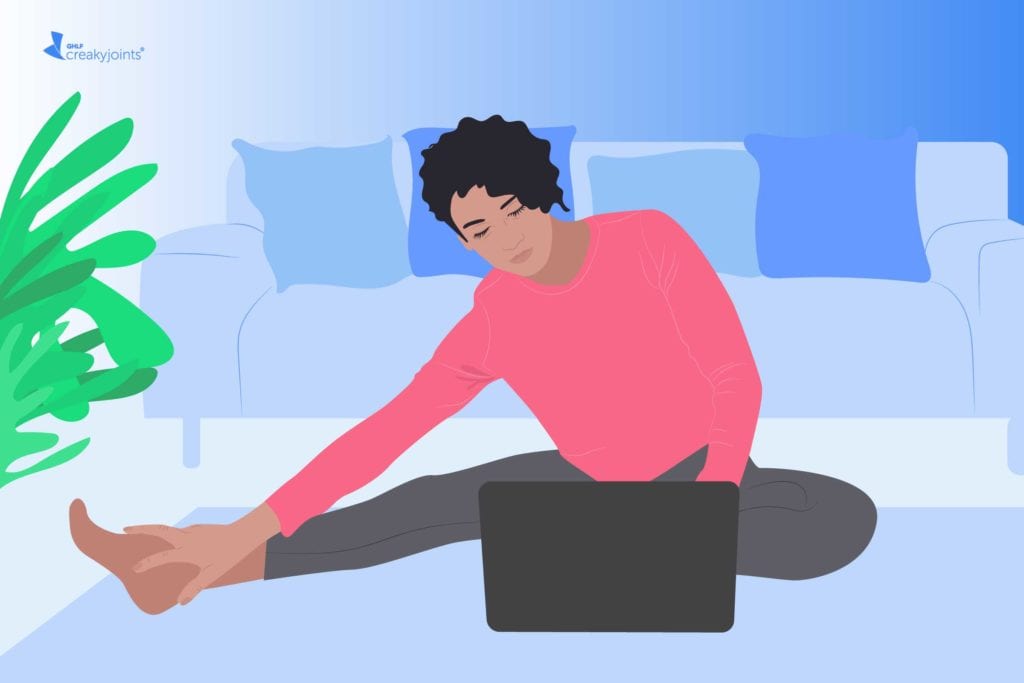New Year’s resolutions are hard when you live with an unpredictable chronic illness. Resolutions often require you to make a regular commitment to change, which just sometimes isn’t feasible when you live in chronic pain, have fatigue days, or are busy with doctor appointments. Resolutions also can become expensive, for example, if you decide to buy a gym membership or change your diet and need to buy certain foods. People living with chronic illness are already facing high medical costs through copayments and often cannot afford to invest more into their overall health — whether it be through time or money.
At CreakyJoints and the Global Healthy Living Foundation, we understand the struggle patients go through around this time of year, and the guilt that often accompanies the inability to keep up with New Year’s resolutions. That’s why we hosted a virtual event “New Year’s Resolutions: Chronic Illness Edition” where we came together as a community on Zoom to start making small healthy changes together and create resolutions in our own chronic-illness friendly way.
We invited New York City-based physical therapist Chad Woodard, PhD, DPT, to help us bring movement into our daily lives with a few simple stretches. You can use these stretches alone or to prepare your body for exercise. Think about “how can I prepare in the way I want to move,” says Dr. Woodward. “This way, if you have a better foundation then you are more likely to stick to the resolution.”
Starting Simple
Adding a few simple stretches to your day is a great way to start moving safely — and from here you can build up to other types of movement you want to do on a regular basis.
Before starting an exercise program, it’s best to talk to your doctor about your capabilities and which types of physical activity are best for your body, preferences, and lifestyle. And once you get approval, don’t do anything that hurts — ease into the movements gently, says Dr. Woodard.
Neck Stretch
This stretch is good for the muscles in the neck called scalenes and certicangoid mastoid, says Dr. Woodard. You may feel the stretch in the front part of the neck or the back.
- Bring one ear to the shoulder.
- Slowly turn your head to look at the ceiling, keeping your shoulders down and away from your ears.
- Tilt your head back a bit and roll it a little. Play around with the angle that feels good for you.
- Come out of the stretch, go nice and slowly.
- Repeat on the other side.
Middle-Low Part Spine Stretch
Dr. Woodard explains that this is targeted to the thoracic vertebrae and lumbar vertebrae all the way to the pelvis. If you have spinal arthritis or disc issues, do this at a level that is comfortable for you.
- Stand up, with your right leg in front of your left leg. If balance is an issue for you, stand near something you can balance on like a kitchen counter or wall.
- Twist slowly so your chest is facing toward the right.
- Turn your head to look toward the left. Like ringing out a towel, says Dr. Woodard.
- Stay as far as you think you can go; you should not feel any sharp pains.
- Switch feet and repeat movements on the other side.
“And smile,” says Dr. Woodard. “It’s good to smile while you stretch.”
For more stretches from Dr. Woodard, visit the CreakyJoints YouTube page:
- Hand Exercises for Arthritis
- Morning Exercises for Arthritis (Knee and Back Pain)
- Neck Stretches & Exercises for Arthritis
- Mindfulness Breathing Exercises for Arthritis and Back Pain
Not Sure What’s Causing Your Pain?
Check out PainSpot, our pain locator tool. Answer a few simple questions about what hurts and discover possible conditions that could be causing it. Start your PainSpot quiz.






